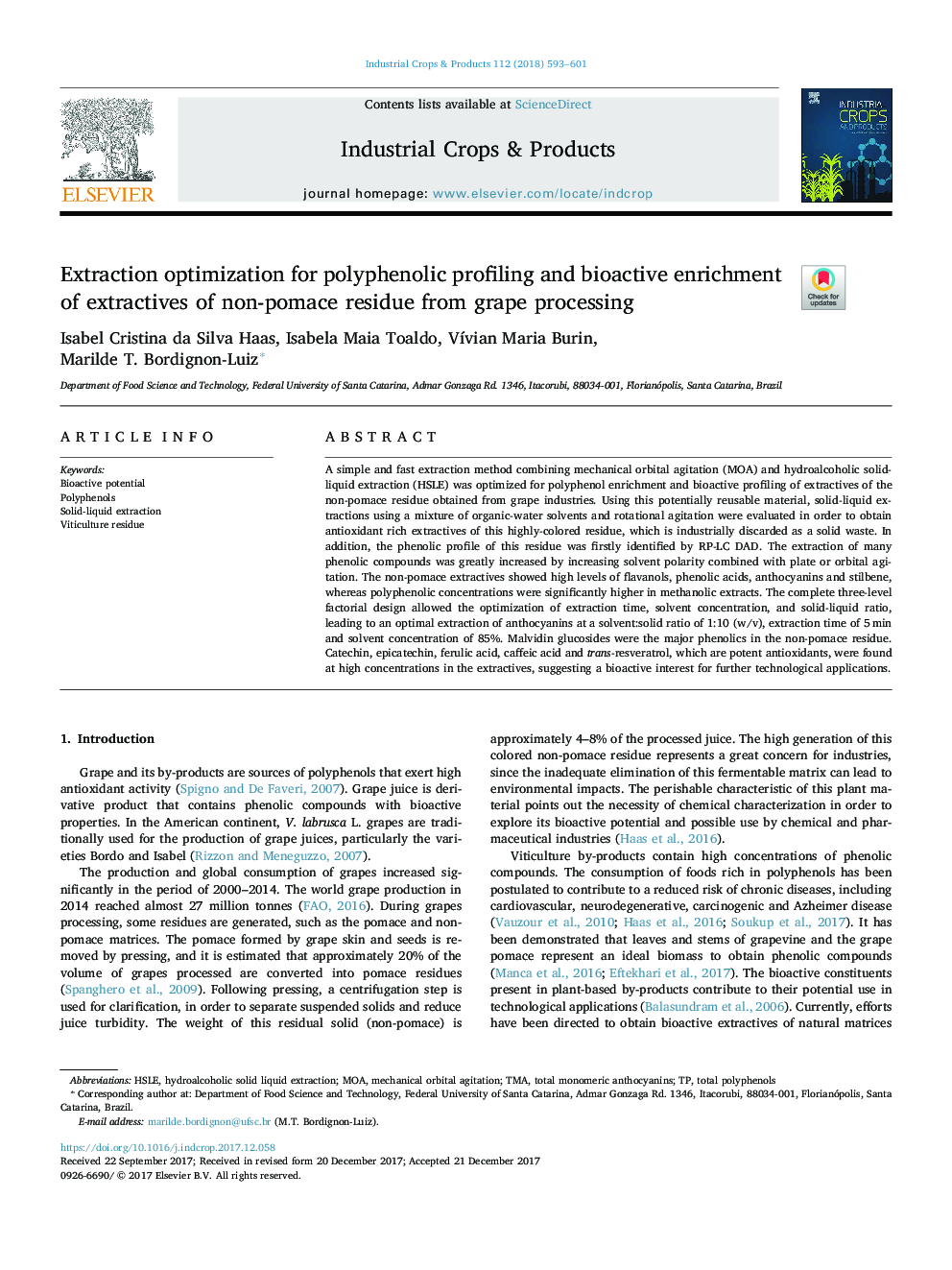| Article ID | Journal | Published Year | Pages | File Type |
|---|---|---|---|---|
| 8880634 | Industrial Crops and Products | 2018 | 9 Pages |
Abstract
A simple and fast extraction method combining mechanical orbital agitation (MOA) and hydroalcoholic solid-liquid extraction (HSLE) was optimized for polyphenol enrichment and bioactive profiling of extractives of the non-pomace residue obtained from grape industries. Using this potentially reusable material, solid-liquid extractions using a mixture of organic-water solvents and rotational agitation were evaluated in order to obtain antioxidant rich extractives of this highly-colored residue, which is industrially discarded as a solid waste. In addition, the phenolic profile of this residue was firstly identified by RP-LC DAD. The extraction of many phenolic compounds was greatly increased by increasing solvent polarity combined with plate or orbital agitation. The non-pomace extractives showed high levels of flavanols, phenolic acids, anthocyanins and stilbene, whereas polyphenolic concentrations were significantly higher in methanolic extracts. The complete three-level factorial design allowed the optimization of extraction time, solvent concentration, and solid-liquid ratio, leading to an optimal extraction of anthocyanins at a solvent:solid ratio of 1:10 (w/v), extraction time of 5â¯min and solvent concentration of 85%. Malvidin glucosides were the major phenolics in the non-pomace residue. Catechin, epicatechin, ferulic acid, caffeic acid and trans-resveratrol, which are potent antioxidants, were found at high concentrations in the extractives, suggesting a bioactive interest for further technological applications.
Related Topics
Life Sciences
Agricultural and Biological Sciences
Agronomy and Crop Science
Authors
Isabel Cristina da Silva Haas, Isabela Maia Toaldo, VÃvian Maria Burin, Marilde T. Bordignon-Luiz,
